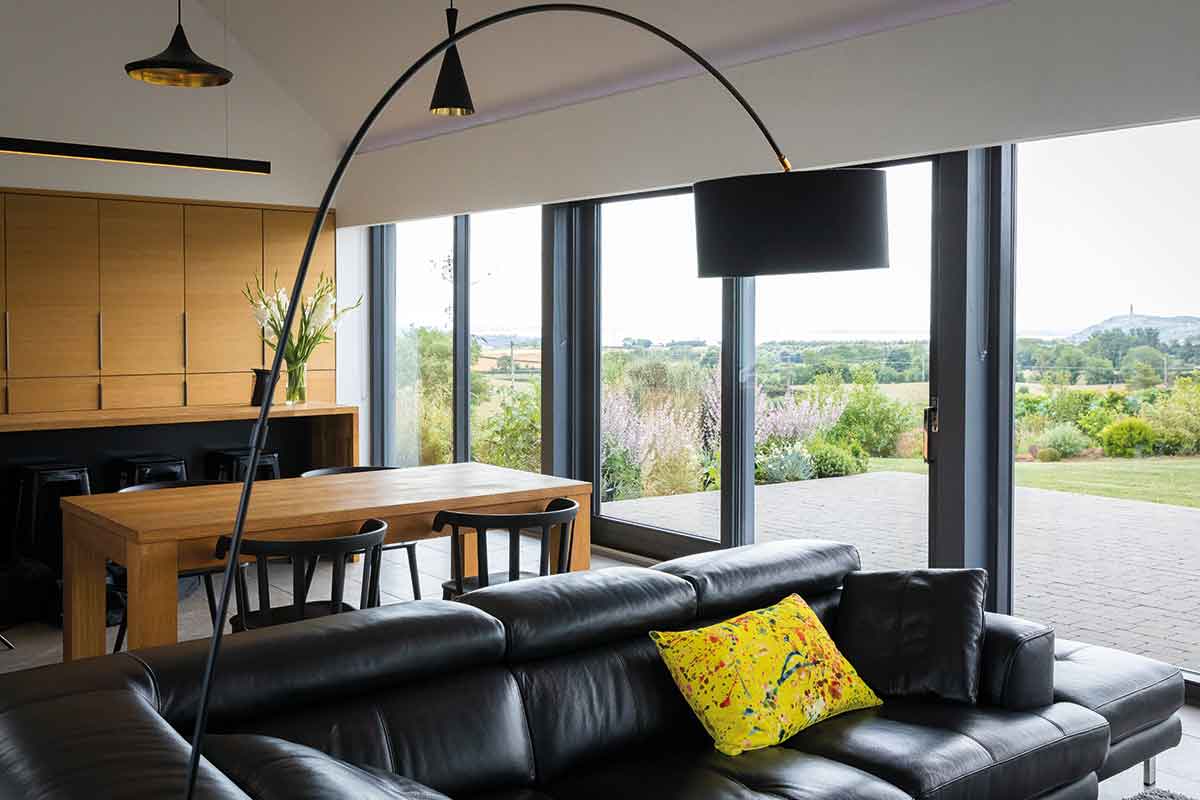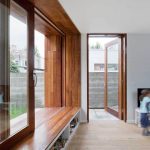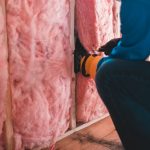Whether you go with double or triple glazing windows will have an impact on costs, and even on your house construction. Another reason why you need to choose your windows early.
In this article we cover:
- Glazing types from double to triple
- Curtain walling
- How much triple glazing costs today
- South versus north facing windows
- Weight and how it affects budget and design
- Other glazing options: stained glass, single glazing and windows of the future
- How windows are made
- Gas types and thermal breaks
- Types of glass, from toughened to laminated
Double and triple glazing
In a new build, you will need double or triple glazing.
Double or IGU – insulated glazing unit. Two sheets of glass separated by a 12mm to 16mm space and hermetically (heat fusion) sealed, is standard. The space may be filled with air or a gas (the most common being argon). The glass can be coated to improve insulation and control solar gain. Wider gaps improve thermal insulation and units are more difficult to break, though they must be pre ordered and can be difficult to fit into existing frames used for double glazing. Having said that, in some cases you can use a thinner edge beading and accommodate a wider double (or even triple) glazed unit into a standard profile.
Triple It’s like double glazing with an extra layer. The three panes of glass and gaps make the window more energy efficient. Because of this you will notice that the surface temperature of the inner pane of a triple glazed unit is significantly warmer than that of a double glazed one – it can even feel warm to the touch, which double glazing rarely does. They can be up to 60 per cent better at insulating than the best double glazing with improved thermal comfort resulting from reduced radiation heat transfer between the window surface and the room, up to 80 per cent over basic double glazing. This means that less heat will be lost from your skin to the glazing surface. Sometimes this radiative heat loss, especially from the face, can give rise to discomfort even when the air temperature is sufficient. Triple glazing is also much heavier as well as thicker so may not suit all frame types, e.g. bifold or sliding doors. However, windows can be top hung (except escape windows) and hinges uprated to reduce the risk of the opening sash dropping. Triple glazed windows are also more effective for sound insulation. And you will get more multiple reflections (starburst effect) from the outside with triple glazing than with double, though optical transparency from the inside is barely affected.
Curtain walling A glass wall spanning more than one floor that is not load bearing; usually double glazed. Gives a stunning visual effect, loads of light, panoramic views and solar gain which must be controlled. But it is difficult to maintain weather tightness, detailing is costly and breaks in thermal bridges and insulation can occur around adjoining materials.
How much more does triple glazing cost?
Triple glazing is now very cost effective as compared to double glazing, and their look is very similar. Installation is the key to success, where the frame meets the wall, so make sure the quotation includes delivery and installation costs as well as any extras such as handles or child locks, and VAT.
Double glazed glass units are still the most commonly specified at present but triple glazing is catching up quickly. Triple glazing could add up to 30 per cent to the glazing costs. That said, the cost difference between the two varies greatly across manufacturers.
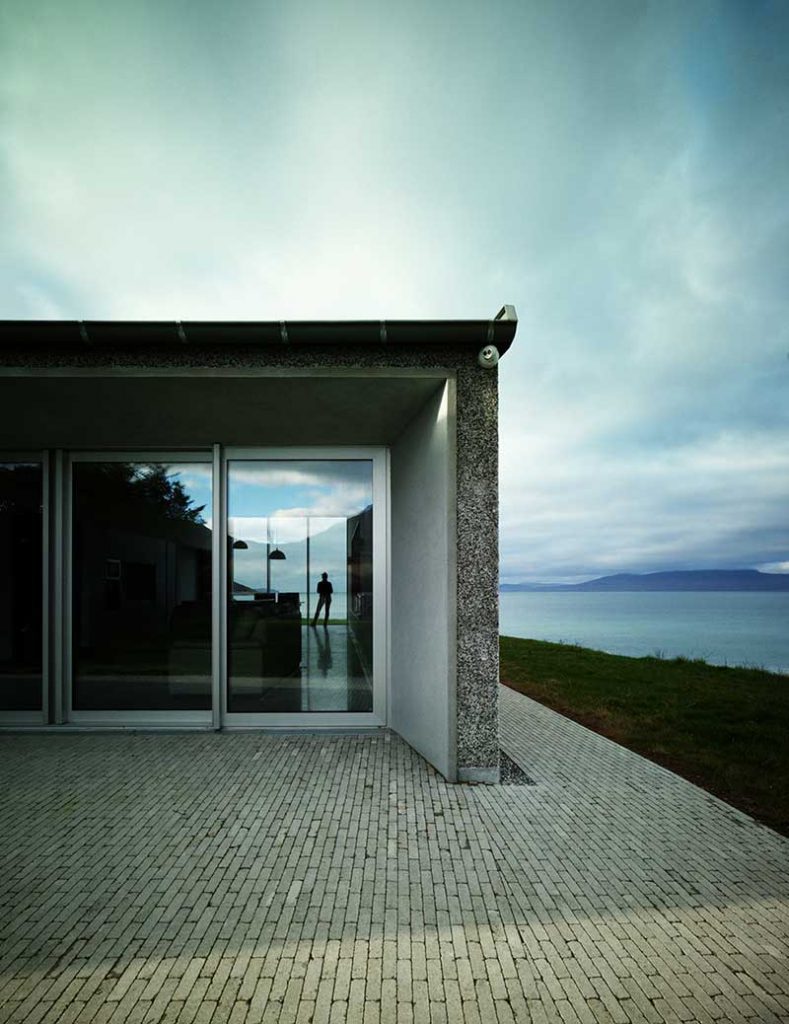
South versus north facing
It is currently common to have triple glazed units specified on certain elevations (most notably cold, north facing) and double glazing on others (most notably south facing which is where the sun shines = solar gains). This may be especially appropriate if increasing solar gains into your home is of interest and benefit to you in terms of your heating strategy, as double glazing allows more shortwave solar radiation (and thus heat) to pass through (whereas triple glazing blocks more longwave heat radiation from escaping). It follows that where heat loss is your primary concern in relation to your home, then triple glazing should be selected instead of double glazing. These decisions form part of the energy rating calculation for the property. A mix of unit types helps balance costs.
Note that while triple glazing will be slightly better at limiting the potential for overheating within the room, a real concern in contemporary designs that feature a lot of glass, it will also retain more heat within the space. To combat overheating, your strategy should be based on orientation and area of glazing, plus suitably dimensioned overhangs (or brise soleils), reflective blinds, thermal mass and high/low openings (or cross ventilation for wider spaces, e.g. with rooflights). See p109.
Weight
Double glazing is not as wide and heavy as triple and this may have a bearing on your house construction; this is why you need to address the question of a window supplier very early on, before the options become restricted.
With triple glazing, the added weight means hinges and opening mechanisms need to be more complex, which contributes to their higher cost. Bifold doors in fact usually come double glazed due to weight.
If some of your windows are very large and wide they may have to be fixed rather than opening. One way around this is to section off a top light in order to reduce the height. You could also make the window slightly narrower or split it in two. Generally, though the lure of a picture window may be great, two or more narrower windows over the same overall width can be just as effective visually – the brain fills in the gaps – and will be better thermally (provided good detailing for thermal bridging) and probably less costly.
Single glazing
For many years, windows consisted of a single sheet (pane) of glass set in putty that bonded it to a metal or timber frame. A single sheet normally 6mm thick within the frame. Thicker glass reduces heat loss and helps with sound insulation; it can be coated for solar control, thermal insulation or it can provide fire protection, noise control, safety, security, self-cleaning or decoration.
A benefit is that it can be cut to size on site. But security is poor because non safety versions break easily, and it’s also liable to have water condense on the surface causing dampness inside.
Single glazing is not an option for new builds, due to current building regulations, because of its high energy loss. And, unless you have a listed property, or on the record of protected structures, it will be difficult to simply replace like with like. Replacing old windows that are currently single glazed now has to be done by an accredited contractor who can guarantee to match Part L (ROI) or Technical Booklet F1 (NI) of the building regulations.
Both ROI and NI building regulations require that you upgrade the energy efficiency of the entire house when more than roughly a fifth of the building fabric gets an upgrade – and replacing the windows will trigger that requirement.
Therefore these single glazed, often draughty, windows are now only common on period properties and on homes that either haven’t been renovated or that want to retain original frames.
If single glazing is a must, due to the thickness of your frames, replacements can be made with energy efficient single glazing but you won’t get near the performance levels that double or triple glazing will yield. If listing requirements are not the issue, you may be able to get double glazed units made up with a reduced gap (say 6mm) and rebate out wooden frames to accommodate the thicker unit.
One answer is to install secondary glazing, which will also help with sound proofing. The best involves creating a whole new frame inside the existing one, with an air gap between the two. The new inner one will have proper, modern glass and draft excluding seals, making the combination very effective.
Window films can help a bit. These thin sheet materials adhere to the indoor surface of window glass, mainly to cut out glare or heat. They can also provide partial privacy, in place of obscured glass. Mirror type effects are available which make the window all but opaque from the outside (except if the light level inside the building is high), while allowing the occupants to see out.
Remember that the more privacy you want, the less light and visibility you’ll get from inside. Films can also be used to give a colour to normal glass. The biggest advantage is that it’s temporary, and if you change your mind or someone else buys the house and doesn’t like it, you can remove it.
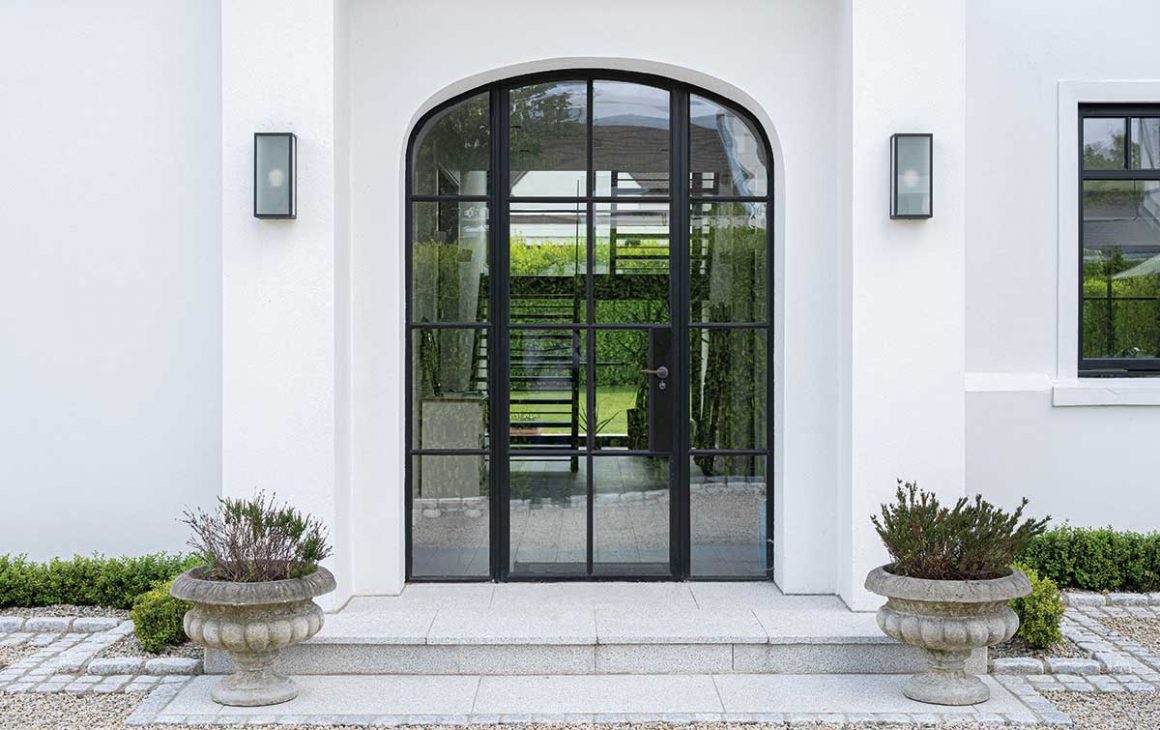
Stained glass
Historically, and when made by the best craftsmen today, a stained glass window is created piece by piece from individual units of coloured glass, cut by hand to a design, edged with lead strips, then finally cemented into place so the individual parts don’t rattle within the lead frames. Light passing through stained glass produces interesting patterns and colour effects.
In contrast, modern decorative glass is produced by colouring, using film or paints applied to the surface of the glass using materials that mimic the historic ones, but are cheaper and require less time and skill. The piece is finished with overlay lead effect applied around the colour. Some of this glass is now made entirely automatically.
To create a double glazed unit, decorative glass is sandwiched inside a normal double glazed unit, fitting the edge of the leaded glass to the space bar of the glazing unit. By using a 10mm air gap (narrow by best modern glazing standards), the stained glass element is held in place with the lead overlay applied to both the outside and inside skin of the double glazing unit. You can find this technique used to preserve the visual impact (and internal colour effects) of stained glass when replacing single glazed windows that incorporated stained glass lights (usually at an upper level within the overall frame – such as in some 1930s properties).
If you are using real stained or traditional leaded glass, then the minimum is a 12mm gap. In this case a protective unit is formed with the panel inside, thus you have three panes of glass with the stained one in the middle.
Maintenance for both types is as with a normal window. This system can be used in aluminium, wooden and modern uPVC windows and doors. Decorative glass is off the shelf and bespoke stained and leaded glass pieces tend to be priced individually, depending on specification, although mass produced versions are available and cost much less.
How windows are made
Glazing units are fitted into the window frame in several ways. Most commonly they are held in place by a bead of the frame material and then weather proofed by a gasket of rubber, plastic or a silicone bead fitted by the installer. Bonded systems fuse the glass to the frame, see p122.
Internally glazed window units are installed from indoors, against a rebate on the frame. The beads are indoors and thus burglar proof, externally beaded windows have beads that can be removed from outside the house.
This makes life a lot easier when replacing a unit, (especially if it’s large and upstairs), but also means it’s less secure; an intruder can easily remove a small glazing section and gain entry which is why this type is not as popular.
However, if the house is in an exposed situation, it’s probably still best to go for externally applied beads as the rebate acts as an additional water barrier, whereas internally-glazed windows rely entirely on the surrounding gasket or silicone for water tightness.
Also, if a window is likely to be subject to a severe wind loading, internal beads can be less reliable than external ones because the pressure of the wind forces the unit onto the rebate of an externally glazed frame thus improving the weather tightness.
Replacing fogged or broken double glazed units is a job for a professional unless the unit is small and you can be sure to install it properly with the correct gaskets and/or silicones.
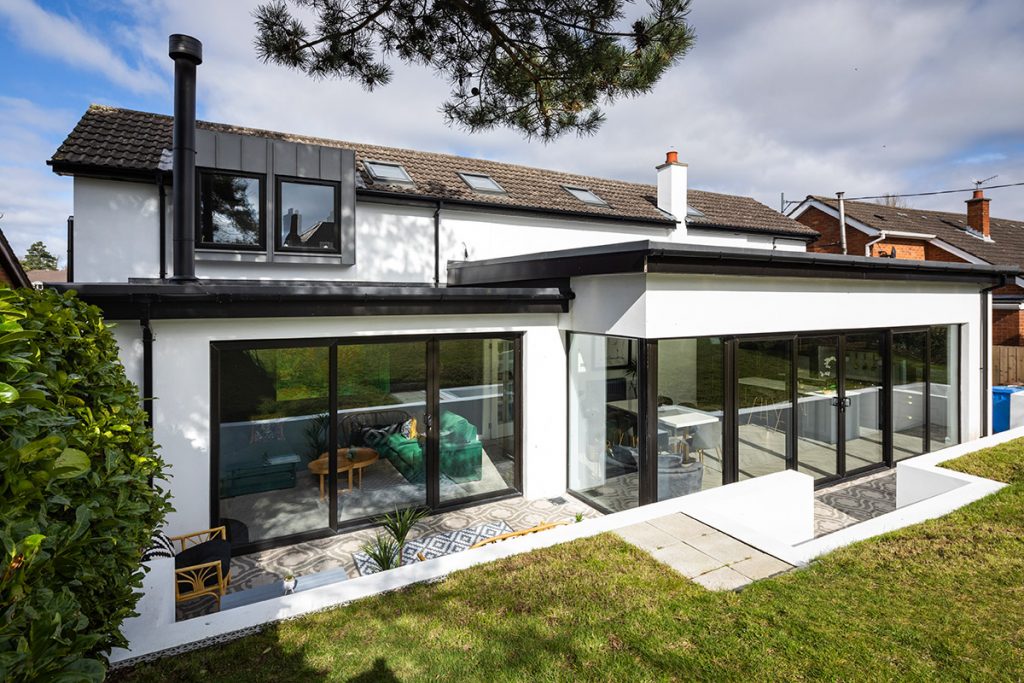
Gas
In between the panes of glass there is a low emissivity gas – it’s a gas that prevents heat from travelling through it. The gas between the panes is mostly argon because although krypton is better performing in U-value terms, it’s about four times the price.
Xenon gas is yet another step above on the cost and performance scale (not widely available). The other alternative is to use a silica aerogel instead of gas between the panes, which is meant to replace low e coatings and be highly insulative.
It is standard practice in colder climates for all windows to have a 12mm gas filled cavity with sealed spacers to prevent the gas from escaping. If for any reason the gas escapes, the efficiency of the window will be reduced. This may not be detectable unless moisture displaces the gas and the window unit fogs up. This can happen with any air or gas filled multiple glazing units and effectively represents a failure of the unit.
Thermal breaks
Indeed, the key to good window detailing are the thermal breaks. These are usually plastic based and flexible but can be rubber or other materials that do not transfer heat. They are often proprietary and placed where thermal bridging can happen – at the junctions where glass meets frame.
An essential component that is often overlooked is the spacer bar, the material that separates the panes of glass – in triple glazing there are two of them. All spacer bars have a sealant around the outside and are then, at their most basic, sheeted with aluminium, either a plain strip or a corrugated one.
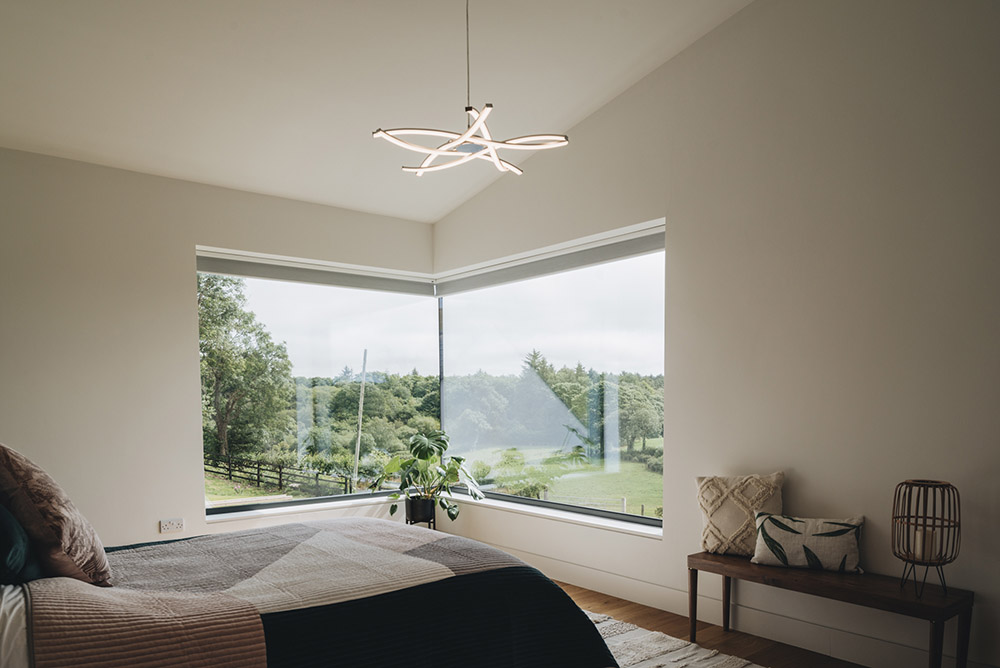
Some have an extra insulating layer between the sealant and the metal, typically in the form of hard polyurethane. Metal, whether it be aluminium or stainless steel is not great at keeping the heat in so a good quality spacer bar will avoid condensation problems and warping issues by reducing the amount of metal used.
These are called warm or insulated spacer bars; the more upmarket products avoid metal altogether and are made of strong yet insulative materials such as desiccated silicone foam or silicone rubber, and also include a vapour barrier to further reduce the risk of condensation between the panes.
Windows of the future
Looking into the future and the possibility of quadruple glazing is one option, but it does raise the issues of weight and the quality of light entering the house in return for U-values of around 0.4W/sqmK.
Alternatives are to improve the external pane coating or replacing argon with other, more effective gasses such as krypton or xenon – similar to argon but with increased performance and cost.
Phase change technology is one of the most interesting, especially from the point of view of preventing overheating. This is glazing that absorbs and stores heat from the sun during the day and releases it at night as the internal temperature falls. A salt melts when temperatures are high and recrystallises, releasing the heat energy, when it’s cooler.
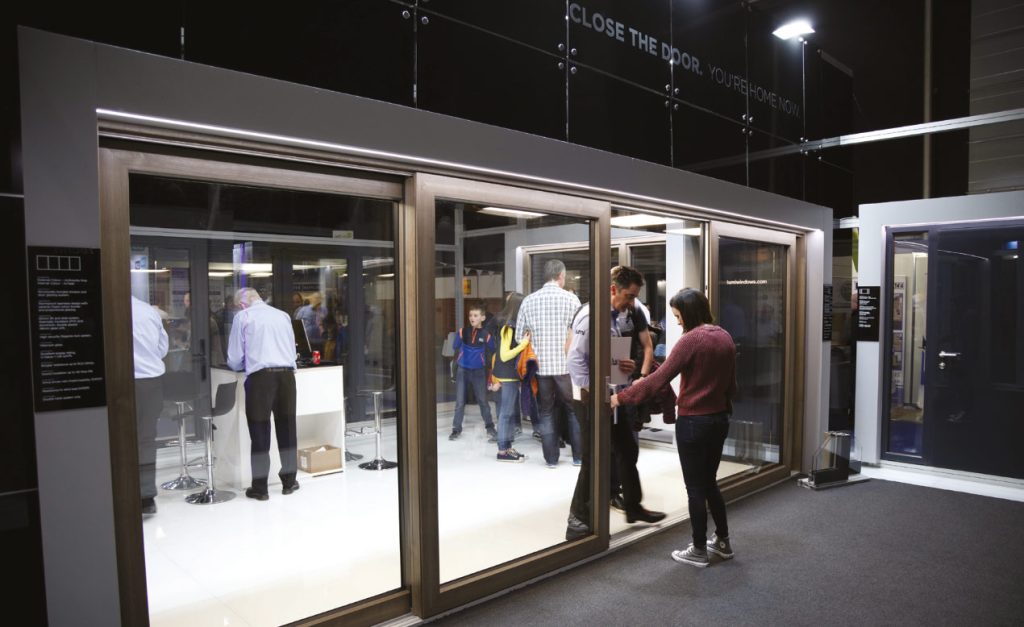
Spectrally selective coatings are considered the next step in low e technology, filtering out 40 to 70 per cent of the heat normally transmitted through clear glass while allowing the full amount of light to pass through. The coatings can be adapted to local climatic conditions by customising what gets filtered out.
Smart windows can switch from being see through to opaque at the flick of a switch. Glazing like this can remove the need for blinds or shades or even curtains, and when opaque, they block UV light too. The colour of the window can also change to block out heat and light.
Some smart windows do not require an electrical input and vary their light transmission characteristics according to ambient temperature swings. Apart from the cost, which is why domestic versions are still quite rare, installation is more expensive, durability is untested and for small scale applications the speed of control may be an issue along with the ability to dim and the degree of transparency.
However, there are now films you can buy that can be applied to the window for a similar effect. Manufacturers are also looking at harvesting energy from wind and rain to independently power smart windows.
Photovoltaic (PV) windows double up as electricity generators but they are not, as of yet, fully see through. There is, however, a company that has placed PV collectors along the outer edge of the window, allowing for a regular see through window within. PV glass blocks are also entering the fray.
Lastly, if you’re concerned about birds breaking their necks on your window panes, you could consider a feather friendly glass which looks clear to the human eye but shows up streaked to the unsuspecting avian.
Types of glass
Your window manufacturer will guide you on the best type of glass for your particular situation. Where safety is an issue they have to specify the correct safety glass. Here are the main types.
Float glass is the simplest, is good for small areas, and cheap. It can form one or more of the double ‘walls’ (leaves) of double glazed units.
Toughened glass is float glass that has been heated and cooled to make it much stronger so it can be used in areas where safety is important. It works well but in large panes it’s possible to see under some conditions distortion (waves) in glass which has resulted from the heating and cooling process. This can make a large area, (or several adjacent large panes), appear to give a ‘wobbly’ reflection.
Laminated is a sandwich of two layers of glass as the ‘bread’ with a plastic sheet material as the ‘filling’. It doesn’t fragment into shards as normal float glass would on breaking, so is ideal for windows in high or overhead situations.
Textured glass is ideal for when privacy is required, but not at the expense of a bit of light, five different levels of obscurity are available.
Low e glass usually has a metal oxide coating applied to one of the pane surfaces facing the cavity of a double glazed unit. It allows most of the sunlight through but reduces the rate at which heat passes out (the ‘e’ stands for emissivity) and thus helps to minimise condensation. Low e glazing will slightly reduce solar heat gains but your overheating strategy should not rely on it. Soft low e coating is more effective than hard coating though less robust and toughening, if required, must be carried out precoating.
Self cleaning The exterior pane is given a special coating. On exposure to daylight the chemicals break down organic deposits (e.g. bird droppings) and at the same time draw raindrops across the surface to wash away the loosened dirt. However, some periodic cleaning of the glass will still be required.
Glass blocks come in two forms. Solid types are made from two pieces of glass fused, and hollow with an insulating chamber enclosed by the glass. They are reasonably good insulators for both heat and sound, used in waterproof enclosures inside and out and are architecturally decorative. They are not load bearing (though can be strengthened using rebars in between), but are heavy so check that your floor can support the planned structure. You will need special jointing compounds and an allowance made for expansion eg. in shower walls.







